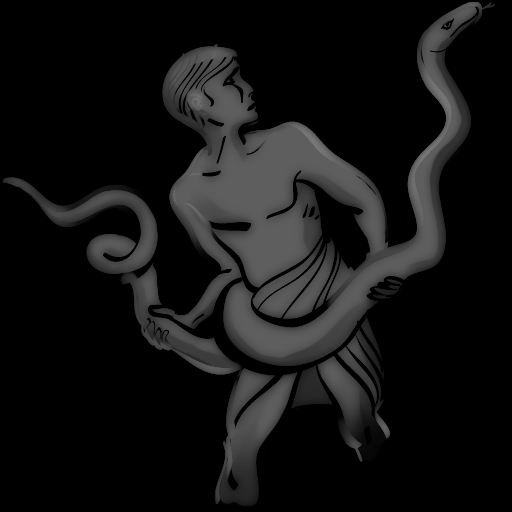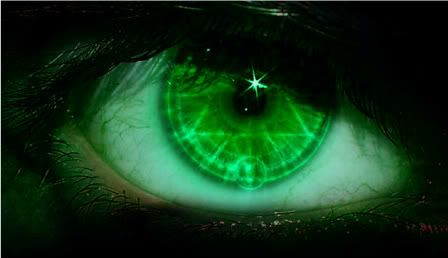Post by Ophiuchus on Mar 2, 2014 12:41:06 GMT -6
Here's my list of top 10 famous lucid dreamers from the fields of science, literature, music and movies - and how their lucid dreams have inspired them.
Stumbling across lucid dreaming by accident is not unusual in the general population. Indeed, some surveys suggest that everyone will have a lucid dream at least once in their lives. And with this concept hitting the mainstream, it's becoming easier to teach yourself lucid dreaming and hone this skill for life.
So it's not too surprising that there are many famous lucid dreamers out there - plenty more than in this list suggests. And for some of them, it has had a direct impact on the work for which they have become famous...
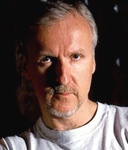
#1 - James Cameron
James Camerson Has Lucid DreamsThe director of Avatar (as well as countless other hit movies including The Terminator, True Lies and Titanic) has cited lucid dreams as being the inspiration for one of his famous movie scenes. Musing on Avatar, he said: "...I've kind of realized that what I was trying to do was create dream imagery, create a lucid dream state while you're watching the film," Cameron told Hollywood Today.
"I think that most people dream of flying at some point and when we're kids we dream of flying and I certainly did, and still have a lot of flying dreams and I thought that if I can connect to an audience, to a kind of collective unconscious in almost the Jungian sense, then it bypasses all the politics and all the bull***, and all the culturally specific stuff and all the language specific stuff around the world and connects us all to that kind of childhood, dreamlike state when the world was magical and infinite and scary and cool and you could soar. So that was the concept behind these scenes. And for me, personally, this was the part of the movie that I like the best, that I can watch over and over again."
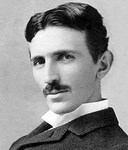
#2 - Nikola Tesla
Nikola Tesla Went Beyond Lucid DreamingA genius inventor, Tesla is best known for his many revolutionary developments in the field of electromagnetism. His work formed the basis of modern-day commercial electricity using Alternating Current (AC) power systems. However, he also came up with many marvelous scientific claims, some of which remain unresolved to this day, nearly 70 years after his death.
Nikola Tesla possessed some extraordinary mental characteristics: an acute sense of hearing, visualization skills so vivid as to mimic reality, and bizarre eccentricities of habit and behavior. His visualizations enabled him to conduct realistic "dream experiments" while he was wide-awake in the lab. As a result, it is very tempting to suggest that, in his virtual laboratory, Tesla functioned one level above the lucid dream state. He had the ability, while being both physically and mentally awake, to run complex visualizations internally with all the realism and automaticity of a lucid dream world.
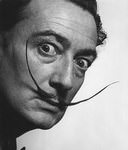
#3 - Salvador Dali
Salvador Dali May Have Had Lucid DreamsThe famous surrealist painter, Salvador Dali, knew that lucid dreams were real long before they were scientifically verified in the lab. He used dream incubation techniques to pre-program his dreams, and produced many dream-inspired works, such as Dream Caused by the Flight of a Bee Around a Pomegranate a Second Before Awakening.
Dali also pursued some forms of automatism as a way of inspiring new works straight from the unconscious. However, he eventually turned to a method he called "critical paranoia" - a state in which he could apparently cultivate delusion while maintaining sanity. His eccentric persona, which is what helped make him so famous, was even considered part of his art practice.

#4 - Chris Nolan
Chris Nolan is a Lucid DreamerAs the director of Memento and The Dark Knight, Chris Nolan mined his own lucid dreams to conceive Inception.
"I wanted to do this for a very long time, it's something I've thought about off and on since I was about 16," he told The Los Angeles Times. "I wrote the first draft of this script seven or eight years ago, but it goes back much further, this idea of approaching dream and the dream life as another state of reality."
Intriguingly, Inception's main character, Dom Cobb, is played by Hollywood celebrity Leonardo DiCaprio who also had lucid dreams before starring in the movie. The role of Cobb in the tangled dream-within-a-dream plot is to implant an idea in the subconscious mind of his victim.
While the idea of shared dreaming currently resides in the land of science fiction, we can't escape the inherent truths of this movie: that the dream architects consciously manipulate the dreamscape with all the realism of waking life. Also like lucid dreams, however, the subconscious mind has its own agenda...
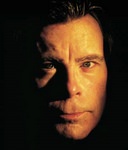
#5 - Stephen King
Stephen King Explored The Idea of Lucid DreamingDoes the king of horror have lucid dreams? There are a few clues that he has at least dabbled in the phenomenon. Stephen King writes about lucid dreaming in his 1995 novel, Insomnia, an extraordinary tale about an insomniac who begins to see brilliant auras - and then more disturbing hallucinations as his condition deteriorates.
Another clue that Stephen King may be a lucid dreamer is how he finds inspiration for his novels. In an interview with UK reporter Stan Nicholls on the inspiration for Misery, King said: "Like the ideas for some of my other novels, that came to me in a dream. In fact, it happened when I was on Concord, flying over here, to Brown's. I fell asleep on the plane, and dreamt about a woman who held a writer prisoner and killed him, skinned him, fed the remains to her pig and bound his novel in human skin. His skin, the writer's skin. I said to myself, 'I have to write this story.' Of course, the plot changed quite a bit in the telling. But I wrote the first forty or fifty pages right on the landing here, between the ground floor and the first floor of the hotel."
And in an interview with Naomi Epel, King said: "I've always used dreams the way you'd use mirrors to look at something you couldn't see head-on, the way that you use a mirror to look at your hair in the back. To me that's what dreams are supposed to do. I think that dreams are a way that people's minds illustrate the nature of their problems. Or maybe even illustrate the answers to their problems in symbolic language."
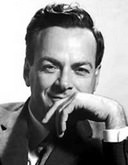
#6 - Richard Feynman
Richard FeynmanThe famous American physicist, Richard Feynman, declared his aptitude for lucid dreaming in his national bestseller, Surely You're Joking, Mr. Feynman! He dedicated an entire chapter to his experiments with lucid dreaming where he gave a detailed account of how he influenced his dreams:
"I also noticed that as you go to sleep the ideas continue, but they become less and less logically interconnected. You don't notice that they're not logically connected until you ask yourself, "What made me think of that?" and you try to work your way back, and often you can't remember what the hell did make you think of that! So you get every illusion of logical connection, but the actual fact is that the thoughts become more and more cockeyed until they're completely disjointed, and beyond that, you fall asleep.
"I kept practicing this watching myself as I went to sleep. One night, while I was having a dream, I realized I was observing myself in the dream. I had gotten all the way down, into the sleep itself!
"I discovered that I could turn around, and walk back through the train -- I could control the direction of my dream. I get back to the car with the special window, and I see three old guys playing violins -- but they turned back into girls! So I could modify the direction of my dream, but not perfectly."
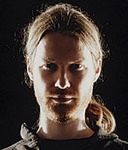
#7 - Richard D James / Aphex Twin
The electronic musician also known as Aphex Twin, Richard D James has publicly stated that the sounds from his album Selected Ambient Works Volume II were inspired by lucid dreams. Upon waking, he would attempt to re-create the sounds and record them.
This album consists of lengthy ambient compositions which James has described as being "like standing in a power station on acid". James also claims to have natural synesthesia which contributes to his work.

#8 - Richard Linklater
Richard Linklater Has Lucid DreamsThe director of the dreamy live-action rotoscoped movie, Waking Life, Richard Linklater is very familiar with the concept of lucid dreams. The movie is an intriguing philosophical jaunt into the world of lucid dreaming and asks the question: "Are we sleep-walking through our waking state or wake-walking through our dreams?"
The animation technique used in Waking Life requires animators to trace over live-action film movement, frame by frame, giving a curious dream-like appearance; real but not real. Rotoscoping was again used in Linklater's 2006 movie, A Scanner Darkly. This movie also pressures its protagonists to make a decision about the reality they are experiencing and to "wake up", to see their world for what it really is.
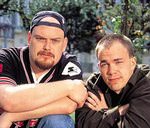
#9 - The Wachowskis
The Wachowski Brothers are Lucid DreamersThe creators of The Matrix, Andy and Lana Wachowski, are lucid dreamers who drew on this notion to create a virtual reality world in which we are all mentally enslaved, not recognizing that we are merely "dreaming". According to the official Matrix website, they drew on a whole host of philosophies to devise the plot, including Descartes, Mahayana Buddhism and the proverbial "brain in the vat" problem. The conundrum of The Matrix is: "How do I know that my reality is not an illusion?" This is the key to unlocking a dream and becoming consciously lucid.
The Wachowskis convey this and more in their sci-fi trilogy. They show us that the simple suspicion that you are dreaming is not enough (Neo knew this from the start, yet he still wasn't able to control the Matrix yet). Instead, you must train your mind in your own lucid dojo before you can achieve full creative action. Like Neo, many newbie lucid dreamers have difficulty flying (or at least staying airborne) until they have been through their own personal training regime. We learn the mental perspective required to understand what makes flight possible in a non-physical dream world. Because of this insight, The Matrix is a veritable instruction manual for lucid dreamers.
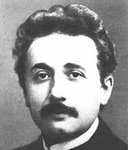
#10 - Albert Einstein
Did Albert Einstein Have Lucid Dreams?Was Einstein a lucid dreamer? Since conscious dreaming was not officially categorized nor popularized until after his death, we can only really speculate. However, it is clear that he mused on the concept of his internal dream world, and even used visualization techniques to arrive at some of his theories, including that of relativity. One of his most famous quotes deals with the condition of consciousness: "Reality is merely an illusion, albeit a very persistent one." This is typical of the conclusion that every lucid dreamer makes after his first legitimate lucid dream - how can we trust our real-world perception when our dreams so effortlessly mimics reality?
Where did Einstein's genius come from? Post-mortem studies of his brain have revealed some interesting differences to the average brain. His parietal lobes were 15% wider than average - and area usually connected to spatial and visual cognition, as well as mathematics. He also had a rare pattern of ridges and grooves in his parietal lobes, thought to aid his visual thinking when it came to physics. And a third key difference is related to a knob found in the motor cortex, associated with musical ability (Einstein played the violin avidly since childhood). Ironically, Einstein's brain was actually smaller than average, which tells us his genius had more to do with the structure than size.
Einstein's Dreams by Alan Lightman is a novel which fictionalizes Einstein as a young scientist who is troubled by dreams as he works on his theory of relativity in 1905. Each dream involves a conception of time, though some scenarios may involve exaggerations of true phenomena related to relativity
www.world-of-lucid-dreaming.com/famous-lucid-dreamers.html
_________________________________________________________________________________________________________________________________________________________________________________________
H. P. Lovecraft: Flight From Madness

This article was written by Donald Tyson
The writer of horror stories, Howard Phillips Lovecraft (1890—1937), was a man at war with himself. On the conscious level he was a rationalist, a materialist, and toward the end of his life, an atheist who rejected all forms of religion, spirituality, magic, and mysticism as no more than rank superstitions. Lovecraft did not believe in God or the afterlife. It was his stated conviction that after death consciousness simply ceased. He thought prayer to be a waste of time, and all human striving devoid of meaning in a pitiless universe unconcerned with the fate of the human species. Most emphatically he rejected the existence of the supernatural creatures and otherworldly events described in his fiction. In a 1916 letter he wrote, “I never had the slightest shadow of belief in the supernatural.”1
Beneath the surface, however, Lovecraft’s mind was a chaos of fantastic daydreams, horrifying nightmares, strange impulses, irrational fears, and uncanny intuitions. These chaotic aspects of his deep mind intruded themselves on his waking life in the form of obsessions that are too numerous to list. To mention only the most prominent of them, Lovecraft was convinced that he was a man out of his natural time period. He believed that his time was the eighteenth century, and saw himself as an English gentleman born two centuries late. In the same letter quoted above, he wrote, “I began to dream of myself in those scenes, witnessing tantalising fragments of eighteenth century daily life that faded too soon into wakefulness.”2 As a consequence, he affected the mannerisms, archaic speech, and writing style of an eighteenth century gentleman of New England. He did not regard this as an affectation—it seemed to him the natural way to behave: “In this manner my style was formed; not as a conscious archaism, but as though I had actually been born in 1690 instead of 1890.”3

In a 1926 letter to his aunt, he wrote concerning his powerful sense of having lived in Marblehead prior to the Revolutionary War, “the place (in common with Salem, Portsmouth, and all old New England scenes) gives me at times an intensely poignant illusory sensation of having done so in the period around 1750—1760.”4 This inner conviction of having lived in the past was so clear that Lovecraft was able to recount the details of his previous lives. He recognized that many people would assume these to be true past-life experiences, but since he rejected reincarnation with his conscious mind, he was unable to entertain the possibility, and dismissed such strong déjà-vu events with unconvincing rational explanations.
Connected with this mania for the eighteenth century was Lovecraft’s conviction, formed while he was a teenager, that he was an old man in a young man’s body.5 He took to referring to himself in correspondence with others as “papa” and “grandpa” and the “old gentleman,” and he encouraged his friends to humor him in this bizarre mental quirk. Correspondents who met him for the first time were often amazed at how young he was, since in his letters he adopted the pose of an octogenarian. He sometimes referred to adult friends as though they were children, calling them “sonny” and “lad.” He spoke of his stooped shoulders, even though he had no stoop that is visible in his photographs and was robust of body.
He also suffered from the obsession that his face was hideously deformed, and that no woman could possibly love him. This may have been the result of a problem during his youth with involuntary facial grimaces or twitching, which he later dismissed on the conscious level as having been due to ingrown facial hairs. This complex was exacerbated by his mother, who agreed with him that he was hideous, and may have first planted the idea in his mind while he was still a boy.6 He overcame the twitching as an adult, but the self-consciousness it had aroused contributed to the distance he always felt from other people.
Self-consciousness was not the reason for his withdrawal from society as a young man. Shame over his failure to finish high school, and his corresponding inability to enter Brown University, triggered an extended nervous breakdown. For a five-year period from 1908 to 1913, he seldom left his mother’s apartment during the day, but slept or lay around reading with the curtains drawn. At night he would wander the near-empty streets of his native Providence, Rhode Island, studying the colonial architecture he loved with such a passion, lingering over the grotesque ancient gravestones in Swan Point Cemetery where his mother’s family had its family plot. Throughout his life, Lovecraft remained morbidly fascinated by death and decay.
This irrational, chaotic side of Lovecraft’s outwardly controlled mind showed itself most strongly in the content of his strange dreams. From early childhood he experienced uncommonly detailed dreams, often of a horrifying type, in which he found himself projected into the dream as though he were a disembodied eye that floated above the scene and had the power to move about wherever he directed it. On at least one occasion, he felt that he might be able to will himself to enter into one of the characters of his dream, but fear woke him before he could try—he was terrified that if he entered the dream character, he might become trapped in the dream.
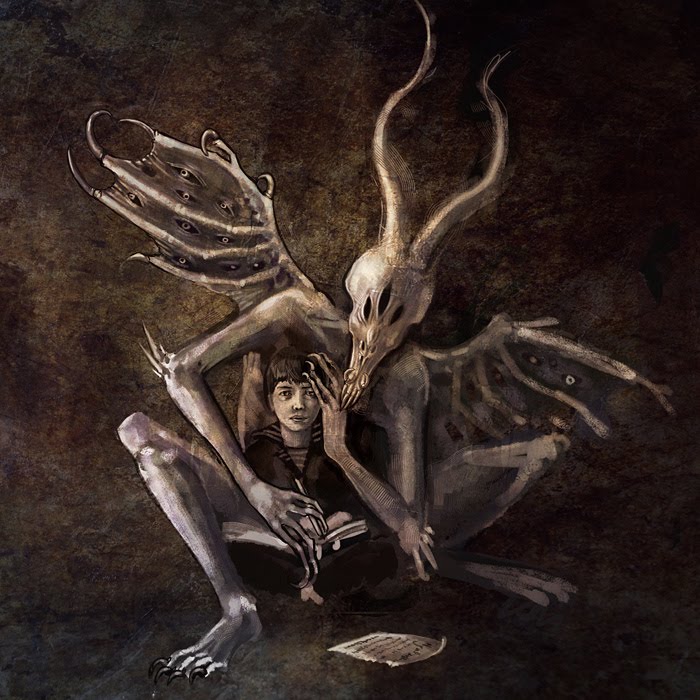
These nightmares often repeated themselves with minor variations for periods of years. His dream of the beings he called night-gaunts, which began shortly after the death of his grandmother when Lovecraft was only five years old, continued until adulthood. The dream character named Nyarlathotep, who would figure so prominently in Lovecraft’s stories about the Old Ones, came to him in various guises in his dreams, as an Egyptian prince and a traveling showman, among others. He later referred to these forms as the “avatars” of Nyarlathotep.
Another of Lovecraft’s deep-seated fears was a terror of the ocean, or more specifically, of the mysteries that lurked beneath the surface. An odd consequence of this terror was the accompanying dread Lovecraft felt toward all kinds of seafood. He told a friend, “I have hated fish and feared the sea and everything connected with it since I was two years old.”7 The very sight or smell of fish made him physically ill. This dread of the sea surfaces in his tales of Cthulhu, Dagon, and the Deep Ones. In the story The Horror at Martin’s Beach, which he wrote in 1922 in concert with his future wife, Sonia Greene, an unseen sea-monster tricks sunbathers on a resort beach into grasping a long rope that extends into the water, and the bathers find themselves unable to release it. Inexorably, they are drawn like fish on a line, screaming and weeping, beneath the waves.
During his years as a recluse, Lovecraft’s deep but unacknowledged need to revel in bizarre and morbid fantasies caused him to seek out and read the fantasy and horror stories in popular fiction magazines. Although the quality of writing was poor, the grotesque content of these stories fed Lovecraft’s unconscious hunger for what he would later term “cosmic horror.” He joined an amateur writing group, and his interaction with other amateur writers drew him out of his reclusive phase. Eventually, he began to write horror fiction of his own.
Writing stories about his nightmares, and about the things that both obsessed and terrified him, was Lovecraft’s way to gain conscious control over their contents, and in this way purge them from his psyche—or at least, to castrate them and deprive them of their power over him. Many of his stories are no more than recorded dreams, or dream scenes and events with a small veneer of fiction to give them a context. His stories Nyarlathotep and The Statement of Randolph Carter, for example, are direct transcriptions of his dreams. His story Polaris is based on a dream in which he flew as a disembodied awareness over a “city of many palaces and gilded domes, lying in a hollow betwixt ranges of grey, horrible hills.”8

There is a term for what Lovecraft was doing in sleep, although it was not in common usage during his period—lucid dreaming. Lovecraft developed the natural ability to retain a portion of critical awareness during his dreams, and to direct that awareness to observe various aspects of the dreams, which were of uncommon complexity and clarity. Lucid dreaming is recognized today as a type of astral projection. Perhaps because of this partial control over his awareness in his dreams, he was able to remember them in great detail, and he used this gift to give his stories their eerie sense of reality. In reading his stories, we literally walk through Lovecraft’s nightmares, observing scenes and events as he must have observed them while having the dreams.
Lovecraft’s greatest character, Randolph Carter, is the alter-ego of Lovecraft himself. The descendant of a line of magicians of New England, Carter has the power to wander through the dreamlands at will with conscious awareness and full volition. Carter figures most prominently in Lovecraft’s novel The Dream-Quest of Unknown Kadath, which takes place entirely within the land of dreams while Carter is asleep. It is an odyssey through the dreamlands, during which Carter confronts and overcomes, or reconciles with, some of the most terrifying beings in Lovecraft’s own nightmares, such as the night-gaunts of his early boyhood, who in the novel become Carter’s means to obtain the fulfillment of his quest.
In the novel, the dreamlands are a kind of astral landscape common to both humans and other intelligent races. Carter can go where he wants and do what he likes, although the dreamlands have their own laws that apply as much to Carter when he wanders their byways as they do to their strange residents. It is a fascinating concept that could only have been developed by someone to whom dreams have the most profound significance—that the world of dreams is a persistent place, with as much reality as the waking world, or perhaps greater reality.
Lovecraft’s horrifying nightmares find expression not only in his tales of the dreamlands, but in his stories about the Great Old Ones—various ancient beings and alien races that ruled the Earth in the distant past, long before the evolution of the human species, and who wait on the edges of our reality for the time when the stars come right once more. Among their ranks looms mighty Cthulhu with his warrior spawn, who in Lovecraft’s mythos presently dream in a deathlike sleep beneath the Pacific Ocean, in the sunken city of R’lyeh. When the stars come right, R’lyeh will rise, and Cthulhu will raven the world for his delight.
All of Lovecraft’s Old Ones threaten to invade our world, our very reality, from moment to moment, but mankind remains blissfully unaware of their existence, and for this reason alone is able to enjoy the illusion of supremacy on this planet. Knowledge is our foe, ignorance our only salvation, for when science progresses sufficiently to reveal the existence of the Old Ones, and the true place of humanity in the hierarchy of living things, we will either all be driven insane, or will descend into a new dark age of barbarism and ignorance for our own preservation.
This is the message of Lovecraft’s grim stories. Humanity balances on the very brink of oblivion, protected only by our ignorance. The dread power of such books as the Necronomicon, which Lovecraft originated for his stories, is that they lift the veil of unknowing from the minds of those who read them, driving them mad or causing them to kill themselves in order to escape the unbearable horror of the human condition. In Lovecraft’s tales, the naked truth about existence is toxic.

Madness is a common theme for Lovecraft, and little wonder. His father went insane when he was two, his mother when he was 28. Both had to be locked up for the remainder of their years in Butler Hospital in Providence. All his life Lovecraft feared that he would succumb to the same fate as his parents. He suffered numerous nervous breakdowns during the first half of his life, and it may well be that the act of writing about the Old Ones and the dreamlands was the only thing that preserved his fragile sanity.
The enigma of Lovecraft’s life is that a man who possessed a natural ability to dream lucid dreams, and to travel through astral realms, a man to whom the occult and strange were the central motivators of his existence, should proclaim himself to be a complete unbeliever in all things other than the material reality of the senses. But this enigma opens its secret when we realize that Lovecraft not so much disbelieved in the esoteric, as he refused to allow himself to entertain for an instant even the possibility of its reality.
Lovecraft was always terrified that he would go mad. He sought refuge in materialism, embracing it with the fervor of a drowning man who grasps at a floating barrel. The narrowness and simplicity of the materialistic philosophy, which denies all gods and angels, all magic and miracles, was Lovecraft’s personal salvation. It set at a distance and helped him to trivialize the contents of his nightmares, which he was then able to treat as no more than entertainments for his amusement and the amusement of others. Had he been forced to acknowledge their true power, it would very probably have caused him to share the fate of most of the unfortunate readers of the Necronomicon—madness or suicide, both escapes from a reality too horrifying to endure. But Lovecraft found another escape—he fled into a materialistic and atheistic rejection of all reality beyond the most basic level of the tangible. He chose to believe in only what he could touch. In essence, like some doomed hero of Greek tragedy, Lovecraft put out his own eyes lest the things he saw should drive him insane.
Notes
1.Lovecraft, H. P. Lord of a Visible World: An Autobiography in Letters. Edited by S. T. Joshi and David E. Schultz. Athens, OH: Ohio University Press, 2000, page 12.
2.Ibid., p. 24.
3.Ibid., p. 64. In this same 1914 letter he referred to himself as “an ancient.”
4.Ibid., p. 188.
5.In a 1934 letter he referred to himself as “an old man of 14.” Lovecraft, p. 30.
6.De Camp, L. Sprague. H. P. Lovecraft: A Biography. New York: Barnes and Noble, 1975, p. 27.
7.Ibid., p. 73.
8.Joshi, S. T., and David E. Schultz. An H. P. Lovecraft Encyclopedia. New York: Hippocampus Press, 2001, p. 211.

Donald Tyson Donald Tyson
Donald Tyson (Nova Scotia, Canada) is an occult scholar and the author of the popular, critically acclaimed Necronomicon series. He has written more than a dozen books on Western esoteric traditions. Visit him online at DonaldTyson.com.... Read more
www.llewellyn.com/journal/article/2152
Stumbling across lucid dreaming by accident is not unusual in the general population. Indeed, some surveys suggest that everyone will have a lucid dream at least once in their lives. And with this concept hitting the mainstream, it's becoming easier to teach yourself lucid dreaming and hone this skill for life.
So it's not too surprising that there are many famous lucid dreamers out there - plenty more than in this list suggests. And for some of them, it has had a direct impact on the work for which they have become famous...

#1 - James Cameron
James Camerson Has Lucid DreamsThe director of Avatar (as well as countless other hit movies including The Terminator, True Lies and Titanic) has cited lucid dreams as being the inspiration for one of his famous movie scenes. Musing on Avatar, he said: "...I've kind of realized that what I was trying to do was create dream imagery, create a lucid dream state while you're watching the film," Cameron told Hollywood Today.
"I think that most people dream of flying at some point and when we're kids we dream of flying and I certainly did, and still have a lot of flying dreams and I thought that if I can connect to an audience, to a kind of collective unconscious in almost the Jungian sense, then it bypasses all the politics and all the bull***, and all the culturally specific stuff and all the language specific stuff around the world and connects us all to that kind of childhood, dreamlike state when the world was magical and infinite and scary and cool and you could soar. So that was the concept behind these scenes. And for me, personally, this was the part of the movie that I like the best, that I can watch over and over again."

#2 - Nikola Tesla
Nikola Tesla Went Beyond Lucid DreamingA genius inventor, Tesla is best known for his many revolutionary developments in the field of electromagnetism. His work formed the basis of modern-day commercial electricity using Alternating Current (AC) power systems. However, he also came up with many marvelous scientific claims, some of which remain unresolved to this day, nearly 70 years after his death.
Nikola Tesla possessed some extraordinary mental characteristics: an acute sense of hearing, visualization skills so vivid as to mimic reality, and bizarre eccentricities of habit and behavior. His visualizations enabled him to conduct realistic "dream experiments" while he was wide-awake in the lab. As a result, it is very tempting to suggest that, in his virtual laboratory, Tesla functioned one level above the lucid dream state. He had the ability, while being both physically and mentally awake, to run complex visualizations internally with all the realism and automaticity of a lucid dream world.

#3 - Salvador Dali
Salvador Dali May Have Had Lucid DreamsThe famous surrealist painter, Salvador Dali, knew that lucid dreams were real long before they were scientifically verified in the lab. He used dream incubation techniques to pre-program his dreams, and produced many dream-inspired works, such as Dream Caused by the Flight of a Bee Around a Pomegranate a Second Before Awakening.
Dali also pursued some forms of automatism as a way of inspiring new works straight from the unconscious. However, he eventually turned to a method he called "critical paranoia" - a state in which he could apparently cultivate delusion while maintaining sanity. His eccentric persona, which is what helped make him so famous, was even considered part of his art practice.

#4 - Chris Nolan
Chris Nolan is a Lucid DreamerAs the director of Memento and The Dark Knight, Chris Nolan mined his own lucid dreams to conceive Inception.
"I wanted to do this for a very long time, it's something I've thought about off and on since I was about 16," he told The Los Angeles Times. "I wrote the first draft of this script seven or eight years ago, but it goes back much further, this idea of approaching dream and the dream life as another state of reality."
Intriguingly, Inception's main character, Dom Cobb, is played by Hollywood celebrity Leonardo DiCaprio who also had lucid dreams before starring in the movie. The role of Cobb in the tangled dream-within-a-dream plot is to implant an idea in the subconscious mind of his victim.
While the idea of shared dreaming currently resides in the land of science fiction, we can't escape the inherent truths of this movie: that the dream architects consciously manipulate the dreamscape with all the realism of waking life. Also like lucid dreams, however, the subconscious mind has its own agenda...

#5 - Stephen King
Stephen King Explored The Idea of Lucid DreamingDoes the king of horror have lucid dreams? There are a few clues that he has at least dabbled in the phenomenon. Stephen King writes about lucid dreaming in his 1995 novel, Insomnia, an extraordinary tale about an insomniac who begins to see brilliant auras - and then more disturbing hallucinations as his condition deteriorates.
Another clue that Stephen King may be a lucid dreamer is how he finds inspiration for his novels. In an interview with UK reporter Stan Nicholls on the inspiration for Misery, King said: "Like the ideas for some of my other novels, that came to me in a dream. In fact, it happened when I was on Concord, flying over here, to Brown's. I fell asleep on the plane, and dreamt about a woman who held a writer prisoner and killed him, skinned him, fed the remains to her pig and bound his novel in human skin. His skin, the writer's skin. I said to myself, 'I have to write this story.' Of course, the plot changed quite a bit in the telling. But I wrote the first forty or fifty pages right on the landing here, between the ground floor and the first floor of the hotel."
And in an interview with Naomi Epel, King said: "I've always used dreams the way you'd use mirrors to look at something you couldn't see head-on, the way that you use a mirror to look at your hair in the back. To me that's what dreams are supposed to do. I think that dreams are a way that people's minds illustrate the nature of their problems. Or maybe even illustrate the answers to their problems in symbolic language."

#6 - Richard Feynman
Richard FeynmanThe famous American physicist, Richard Feynman, declared his aptitude for lucid dreaming in his national bestseller, Surely You're Joking, Mr. Feynman! He dedicated an entire chapter to his experiments with lucid dreaming where he gave a detailed account of how he influenced his dreams:
"I also noticed that as you go to sleep the ideas continue, but they become less and less logically interconnected. You don't notice that they're not logically connected until you ask yourself, "What made me think of that?" and you try to work your way back, and often you can't remember what the hell did make you think of that! So you get every illusion of logical connection, but the actual fact is that the thoughts become more and more cockeyed until they're completely disjointed, and beyond that, you fall asleep.
"I kept practicing this watching myself as I went to sleep. One night, while I was having a dream, I realized I was observing myself in the dream. I had gotten all the way down, into the sleep itself!
"I discovered that I could turn around, and walk back through the train -- I could control the direction of my dream. I get back to the car with the special window, and I see three old guys playing violins -- but they turned back into girls! So I could modify the direction of my dream, but not perfectly."

#7 - Richard D James / Aphex Twin
The electronic musician also known as Aphex Twin, Richard D James has publicly stated that the sounds from his album Selected Ambient Works Volume II were inspired by lucid dreams. Upon waking, he would attempt to re-create the sounds and record them.
This album consists of lengthy ambient compositions which James has described as being "like standing in a power station on acid". James also claims to have natural synesthesia which contributes to his work.

#8 - Richard Linklater
Richard Linklater Has Lucid DreamsThe director of the dreamy live-action rotoscoped movie, Waking Life, Richard Linklater is very familiar with the concept of lucid dreams. The movie is an intriguing philosophical jaunt into the world of lucid dreaming and asks the question: "Are we sleep-walking through our waking state or wake-walking through our dreams?"
The animation technique used in Waking Life requires animators to trace over live-action film movement, frame by frame, giving a curious dream-like appearance; real but not real. Rotoscoping was again used in Linklater's 2006 movie, A Scanner Darkly. This movie also pressures its protagonists to make a decision about the reality they are experiencing and to "wake up", to see their world for what it really is.

#9 - The Wachowskis
The Wachowski Brothers are Lucid DreamersThe creators of The Matrix, Andy and Lana Wachowski, are lucid dreamers who drew on this notion to create a virtual reality world in which we are all mentally enslaved, not recognizing that we are merely "dreaming". According to the official Matrix website, they drew on a whole host of philosophies to devise the plot, including Descartes, Mahayana Buddhism and the proverbial "brain in the vat" problem. The conundrum of The Matrix is: "How do I know that my reality is not an illusion?" This is the key to unlocking a dream and becoming consciously lucid.
The Wachowskis convey this and more in their sci-fi trilogy. They show us that the simple suspicion that you are dreaming is not enough (Neo knew this from the start, yet he still wasn't able to control the Matrix yet). Instead, you must train your mind in your own lucid dojo before you can achieve full creative action. Like Neo, many newbie lucid dreamers have difficulty flying (or at least staying airborne) until they have been through their own personal training regime. We learn the mental perspective required to understand what makes flight possible in a non-physical dream world. Because of this insight, The Matrix is a veritable instruction manual for lucid dreamers.

#10 - Albert Einstein
Did Albert Einstein Have Lucid Dreams?Was Einstein a lucid dreamer? Since conscious dreaming was not officially categorized nor popularized until after his death, we can only really speculate. However, it is clear that he mused on the concept of his internal dream world, and even used visualization techniques to arrive at some of his theories, including that of relativity. One of his most famous quotes deals with the condition of consciousness: "Reality is merely an illusion, albeit a very persistent one." This is typical of the conclusion that every lucid dreamer makes after his first legitimate lucid dream - how can we trust our real-world perception when our dreams so effortlessly mimics reality?
Where did Einstein's genius come from? Post-mortem studies of his brain have revealed some interesting differences to the average brain. His parietal lobes were 15% wider than average - and area usually connected to spatial and visual cognition, as well as mathematics. He also had a rare pattern of ridges and grooves in his parietal lobes, thought to aid his visual thinking when it came to physics. And a third key difference is related to a knob found in the motor cortex, associated with musical ability (Einstein played the violin avidly since childhood). Ironically, Einstein's brain was actually smaller than average, which tells us his genius had more to do with the structure than size.
Einstein's Dreams by Alan Lightman is a novel which fictionalizes Einstein as a young scientist who is troubled by dreams as he works on his theory of relativity in 1905. Each dream involves a conception of time, though some scenarios may involve exaggerations of true phenomena related to relativity
www.world-of-lucid-dreaming.com/famous-lucid-dreamers.html
_________________________________________________________________________________________________________________________________________________________________________________________
H. P. Lovecraft: Flight From Madness

This article was written by Donald Tyson
The writer of horror stories, Howard Phillips Lovecraft (1890—1937), was a man at war with himself. On the conscious level he was a rationalist, a materialist, and toward the end of his life, an atheist who rejected all forms of religion, spirituality, magic, and mysticism as no more than rank superstitions. Lovecraft did not believe in God or the afterlife. It was his stated conviction that after death consciousness simply ceased. He thought prayer to be a waste of time, and all human striving devoid of meaning in a pitiless universe unconcerned with the fate of the human species. Most emphatically he rejected the existence of the supernatural creatures and otherworldly events described in his fiction. In a 1916 letter he wrote, “I never had the slightest shadow of belief in the supernatural.”1
Beneath the surface, however, Lovecraft’s mind was a chaos of fantastic daydreams, horrifying nightmares, strange impulses, irrational fears, and uncanny intuitions. These chaotic aspects of his deep mind intruded themselves on his waking life in the form of obsessions that are too numerous to list. To mention only the most prominent of them, Lovecraft was convinced that he was a man out of his natural time period. He believed that his time was the eighteenth century, and saw himself as an English gentleman born two centuries late. In the same letter quoted above, he wrote, “I began to dream of myself in those scenes, witnessing tantalising fragments of eighteenth century daily life that faded too soon into wakefulness.”2 As a consequence, he affected the mannerisms, archaic speech, and writing style of an eighteenth century gentleman of New England. He did not regard this as an affectation—it seemed to him the natural way to behave: “In this manner my style was formed; not as a conscious archaism, but as though I had actually been born in 1690 instead of 1890.”3

In a 1926 letter to his aunt, he wrote concerning his powerful sense of having lived in Marblehead prior to the Revolutionary War, “the place (in common with Salem, Portsmouth, and all old New England scenes) gives me at times an intensely poignant illusory sensation of having done so in the period around 1750—1760.”4 This inner conviction of having lived in the past was so clear that Lovecraft was able to recount the details of his previous lives. He recognized that many people would assume these to be true past-life experiences, but since he rejected reincarnation with his conscious mind, he was unable to entertain the possibility, and dismissed such strong déjà-vu events with unconvincing rational explanations.
Connected with this mania for the eighteenth century was Lovecraft’s conviction, formed while he was a teenager, that he was an old man in a young man’s body.5 He took to referring to himself in correspondence with others as “papa” and “grandpa” and the “old gentleman,” and he encouraged his friends to humor him in this bizarre mental quirk. Correspondents who met him for the first time were often amazed at how young he was, since in his letters he adopted the pose of an octogenarian. He sometimes referred to adult friends as though they were children, calling them “sonny” and “lad.” He spoke of his stooped shoulders, even though he had no stoop that is visible in his photographs and was robust of body.
He also suffered from the obsession that his face was hideously deformed, and that no woman could possibly love him. This may have been the result of a problem during his youth with involuntary facial grimaces or twitching, which he later dismissed on the conscious level as having been due to ingrown facial hairs. This complex was exacerbated by his mother, who agreed with him that he was hideous, and may have first planted the idea in his mind while he was still a boy.6 He overcame the twitching as an adult, but the self-consciousness it had aroused contributed to the distance he always felt from other people.
Self-consciousness was not the reason for his withdrawal from society as a young man. Shame over his failure to finish high school, and his corresponding inability to enter Brown University, triggered an extended nervous breakdown. For a five-year period from 1908 to 1913, he seldom left his mother’s apartment during the day, but slept or lay around reading with the curtains drawn. At night he would wander the near-empty streets of his native Providence, Rhode Island, studying the colonial architecture he loved with such a passion, lingering over the grotesque ancient gravestones in Swan Point Cemetery where his mother’s family had its family plot. Throughout his life, Lovecraft remained morbidly fascinated by death and decay.
This irrational, chaotic side of Lovecraft’s outwardly controlled mind showed itself most strongly in the content of his strange dreams. From early childhood he experienced uncommonly detailed dreams, often of a horrifying type, in which he found himself projected into the dream as though he were a disembodied eye that floated above the scene and had the power to move about wherever he directed it. On at least one occasion, he felt that he might be able to will himself to enter into one of the characters of his dream, but fear woke him before he could try—he was terrified that if he entered the dream character, he might become trapped in the dream.

These nightmares often repeated themselves with minor variations for periods of years. His dream of the beings he called night-gaunts, which began shortly after the death of his grandmother when Lovecraft was only five years old, continued until adulthood. The dream character named Nyarlathotep, who would figure so prominently in Lovecraft’s stories about the Old Ones, came to him in various guises in his dreams, as an Egyptian prince and a traveling showman, among others. He later referred to these forms as the “avatars” of Nyarlathotep.
Another of Lovecraft’s deep-seated fears was a terror of the ocean, or more specifically, of the mysteries that lurked beneath the surface. An odd consequence of this terror was the accompanying dread Lovecraft felt toward all kinds of seafood. He told a friend, “I have hated fish and feared the sea and everything connected with it since I was two years old.”7 The very sight or smell of fish made him physically ill. This dread of the sea surfaces in his tales of Cthulhu, Dagon, and the Deep Ones. In the story The Horror at Martin’s Beach, which he wrote in 1922 in concert with his future wife, Sonia Greene, an unseen sea-monster tricks sunbathers on a resort beach into grasping a long rope that extends into the water, and the bathers find themselves unable to release it. Inexorably, they are drawn like fish on a line, screaming and weeping, beneath the waves.
During his years as a recluse, Lovecraft’s deep but unacknowledged need to revel in bizarre and morbid fantasies caused him to seek out and read the fantasy and horror stories in popular fiction magazines. Although the quality of writing was poor, the grotesque content of these stories fed Lovecraft’s unconscious hunger for what he would later term “cosmic horror.” He joined an amateur writing group, and his interaction with other amateur writers drew him out of his reclusive phase. Eventually, he began to write horror fiction of his own.
Writing stories about his nightmares, and about the things that both obsessed and terrified him, was Lovecraft’s way to gain conscious control over their contents, and in this way purge them from his psyche—or at least, to castrate them and deprive them of their power over him. Many of his stories are no more than recorded dreams, or dream scenes and events with a small veneer of fiction to give them a context. His stories Nyarlathotep and The Statement of Randolph Carter, for example, are direct transcriptions of his dreams. His story Polaris is based on a dream in which he flew as a disembodied awareness over a “city of many palaces and gilded domes, lying in a hollow betwixt ranges of grey, horrible hills.”8

There is a term for what Lovecraft was doing in sleep, although it was not in common usage during his period—lucid dreaming. Lovecraft developed the natural ability to retain a portion of critical awareness during his dreams, and to direct that awareness to observe various aspects of the dreams, which were of uncommon complexity and clarity. Lucid dreaming is recognized today as a type of astral projection. Perhaps because of this partial control over his awareness in his dreams, he was able to remember them in great detail, and he used this gift to give his stories their eerie sense of reality. In reading his stories, we literally walk through Lovecraft’s nightmares, observing scenes and events as he must have observed them while having the dreams.
Lovecraft’s greatest character, Randolph Carter, is the alter-ego of Lovecraft himself. The descendant of a line of magicians of New England, Carter has the power to wander through the dreamlands at will with conscious awareness and full volition. Carter figures most prominently in Lovecraft’s novel The Dream-Quest of Unknown Kadath, which takes place entirely within the land of dreams while Carter is asleep. It is an odyssey through the dreamlands, during which Carter confronts and overcomes, or reconciles with, some of the most terrifying beings in Lovecraft’s own nightmares, such as the night-gaunts of his early boyhood, who in the novel become Carter’s means to obtain the fulfillment of his quest.
In the novel, the dreamlands are a kind of astral landscape common to both humans and other intelligent races. Carter can go where he wants and do what he likes, although the dreamlands have their own laws that apply as much to Carter when he wanders their byways as they do to their strange residents. It is a fascinating concept that could only have been developed by someone to whom dreams have the most profound significance—that the world of dreams is a persistent place, with as much reality as the waking world, or perhaps greater reality.
Lovecraft’s horrifying nightmares find expression not only in his tales of the dreamlands, but in his stories about the Great Old Ones—various ancient beings and alien races that ruled the Earth in the distant past, long before the evolution of the human species, and who wait on the edges of our reality for the time when the stars come right once more. Among their ranks looms mighty Cthulhu with his warrior spawn, who in Lovecraft’s mythos presently dream in a deathlike sleep beneath the Pacific Ocean, in the sunken city of R’lyeh. When the stars come right, R’lyeh will rise, and Cthulhu will raven the world for his delight.
All of Lovecraft’s Old Ones threaten to invade our world, our very reality, from moment to moment, but mankind remains blissfully unaware of their existence, and for this reason alone is able to enjoy the illusion of supremacy on this planet. Knowledge is our foe, ignorance our only salvation, for when science progresses sufficiently to reveal the existence of the Old Ones, and the true place of humanity in the hierarchy of living things, we will either all be driven insane, or will descend into a new dark age of barbarism and ignorance for our own preservation.
This is the message of Lovecraft’s grim stories. Humanity balances on the very brink of oblivion, protected only by our ignorance. The dread power of such books as the Necronomicon, which Lovecraft originated for his stories, is that they lift the veil of unknowing from the minds of those who read them, driving them mad or causing them to kill themselves in order to escape the unbearable horror of the human condition. In Lovecraft’s tales, the naked truth about existence is toxic.

Madness is a common theme for Lovecraft, and little wonder. His father went insane when he was two, his mother when he was 28. Both had to be locked up for the remainder of their years in Butler Hospital in Providence. All his life Lovecraft feared that he would succumb to the same fate as his parents. He suffered numerous nervous breakdowns during the first half of his life, and it may well be that the act of writing about the Old Ones and the dreamlands was the only thing that preserved his fragile sanity.
The enigma of Lovecraft’s life is that a man who possessed a natural ability to dream lucid dreams, and to travel through astral realms, a man to whom the occult and strange were the central motivators of his existence, should proclaim himself to be a complete unbeliever in all things other than the material reality of the senses. But this enigma opens its secret when we realize that Lovecraft not so much disbelieved in the esoteric, as he refused to allow himself to entertain for an instant even the possibility of its reality.
Lovecraft was always terrified that he would go mad. He sought refuge in materialism, embracing it with the fervor of a drowning man who grasps at a floating barrel. The narrowness and simplicity of the materialistic philosophy, which denies all gods and angels, all magic and miracles, was Lovecraft’s personal salvation. It set at a distance and helped him to trivialize the contents of his nightmares, which he was then able to treat as no more than entertainments for his amusement and the amusement of others. Had he been forced to acknowledge their true power, it would very probably have caused him to share the fate of most of the unfortunate readers of the Necronomicon—madness or suicide, both escapes from a reality too horrifying to endure. But Lovecraft found another escape—he fled into a materialistic and atheistic rejection of all reality beyond the most basic level of the tangible. He chose to believe in only what he could touch. In essence, like some doomed hero of Greek tragedy, Lovecraft put out his own eyes lest the things he saw should drive him insane.
Notes
1.Lovecraft, H. P. Lord of a Visible World: An Autobiography in Letters. Edited by S. T. Joshi and David E. Schultz. Athens, OH: Ohio University Press, 2000, page 12.
2.Ibid., p. 24.
3.Ibid., p. 64. In this same 1914 letter he referred to himself as “an ancient.”
4.Ibid., p. 188.
5.In a 1934 letter he referred to himself as “an old man of 14.” Lovecraft, p. 30.
6.De Camp, L. Sprague. H. P. Lovecraft: A Biography. New York: Barnes and Noble, 1975, p. 27.
7.Ibid., p. 73.
8.Joshi, S. T., and David E. Schultz. An H. P. Lovecraft Encyclopedia. New York: Hippocampus Press, 2001, p. 211.

Donald Tyson Donald Tyson
Donald Tyson (Nova Scotia, Canada) is an occult scholar and the author of the popular, critically acclaimed Necronomicon series. He has written more than a dozen books on Western esoteric traditions. Visit him online at DonaldTyson.com.... Read more
www.llewellyn.com/journal/article/2152

